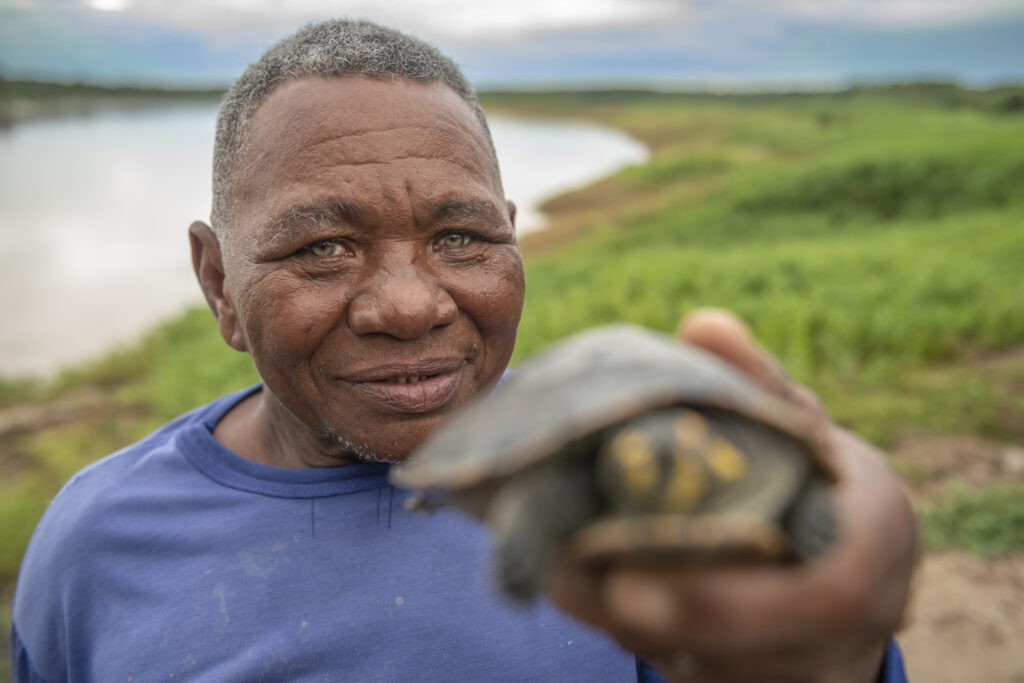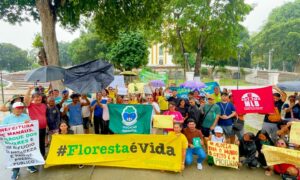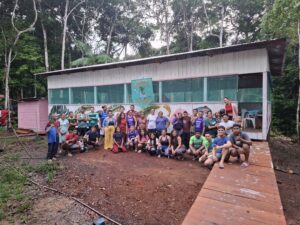The main protagonists of the turtle’s conservation in the Mid-Juruá are the local reserves’ residents.
By Bernardo Oliveira
Turtle conservation history in Mid-Juruá, in the Amazonas, is also a history of fighting. The fight of riverine people, who confronted their “employer” that controlled the local production and exploited communities’ inhabitants in a scheme of semi-slavery.
In the beginning, those “employers” demanded that communities’ members take turtles’ eggs from nests and assemble them in “boards”, or rather tanks, where turtles were stored in order to prevent locals from stealing and eating the eggs. Later, when the turtles were older, they were marketed for their meat.
During the last decades, after a lot of fights from organizations created to change the situation, and also after conquering the creation of Resex Médio Juruá and RDS Uacari reserves, history took a very different turn.
Nowadays, communities still store eggs to protect them from predators and ill-intended people; not to market their meat, but to return the hatchlings to the rivers, assuring the nutritional security of reserves’ inhabitants and the populational growth of hard-shelled animals.

Seu Bomba, one of the main characters of turtle conservation in the region and who performs this work since the “bosses” era, tells that he already got to Mid-Juruá with the intention of preserving biodiversity.
“Back then, with the ‘bosses’, we couldn’t actually preserve anything. We didn’t own anything, it was them who owned everything. Then, we started showing up to some meetings, where they encouraged us to reach a point where preservation would actually happen. We met with local leaderships and, after much fighting, we got Resex Médio Juruá,” explains Seu Bomba.
After the reserve was created, local associations began to have enough power to remove boards from their “bosses” and put them under the protection of communities’ members. Seu Bomba is one of them, and he owns his own board. “It was fighting that got us to where we are today. We started the preservation process. In the beginning, we had 15 turtles in this tank. We had 517 in 2021. It was a huge step we took. And, since then, we’ve been receiving a lot of support from institutions like Instituto Juruá,” says Seu Bomba.
However, there is still a lot to be done. Bomba, with little to no resources, pulls all-nighters at the beach when it’s egg-laying time to protect turtle’s nests, and, according to him, one of the biggest turtle conservation’s problems is surveillance. “The surveillance is almost non-existent, and we are causing a lot of impact in the “boards”, because we can’t sleep at night. If we sleep, they will take it all away,” he revels.
Turtle’s conservation at Mid-Juruá was celebrated on November 15, 2021, releasing thousand of baby turtles into Novo Horizonte and Pupuaí communities, in Rexes Médio Juruá. The event, called Gincana Ecológica, was organised by ICMBio and its associate institutions, it also featured Instituto Juruá.
Hundreds of people, from 42 local communities, watched the hatchling being released and going from the beach to the river. The children were invited to help the animals get to the water, and everyone had a lot of fun learning how valuable it is to conserve biodiversity.

Manuel Cunha, manager of Resex Médio Juruá, tells that “boards” don’t protect only turtles. “They also protect seagulls, nighthawks, chameleons, swallowtails, ducks. They protect a pretty huge environment. Turtles are the focus, but it also brings all of this together.”
The manager also advocated in favor of the turtle’s conservation’s protagonists. “If the beach monitors were working in their usual production, in agriculture, with rubber, collecting seeds, they’d be paid much more than the basic goods they get in return for this work. They do it, because they have conservationist spirits, they want to see the species being preserved, and they also hold a commitment with the conservation unity. And this nourishes them, not economically, but spiritually. They are the biodiversity warriors at Mid-Juruá,” he explains.
Manual reveals that he gets emotional seeing the hatchlings being released and reaching the water. “Because it was hard work to protect thousands of those lives over there, and we are proud that we made it. When you see thousands of lives being released, you close your eyes and say that ‘I know that this conservation unity is fulfilling its role, preserving natural resources for the present and future generations.”







